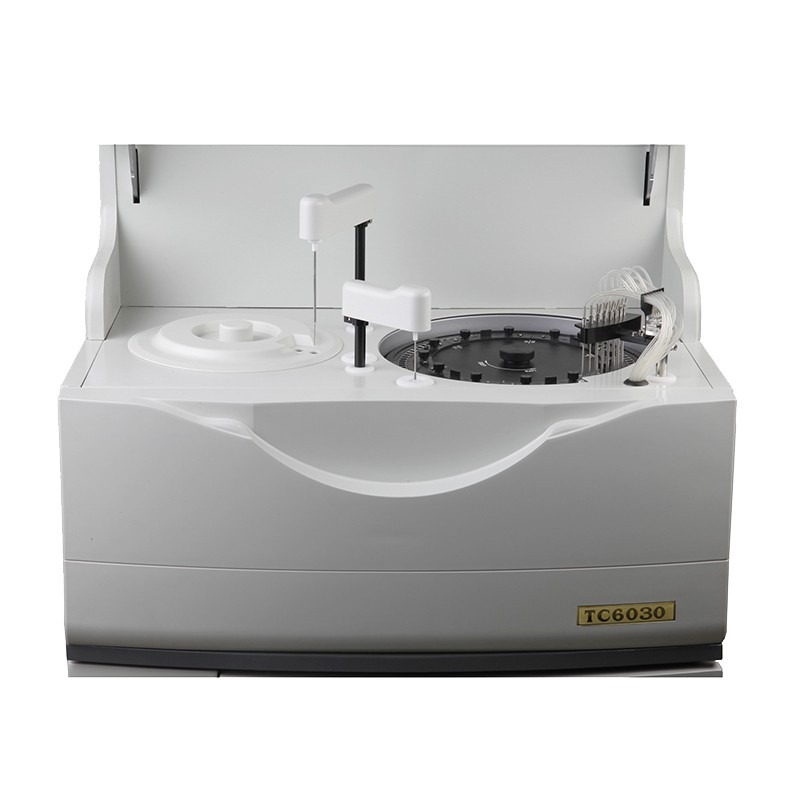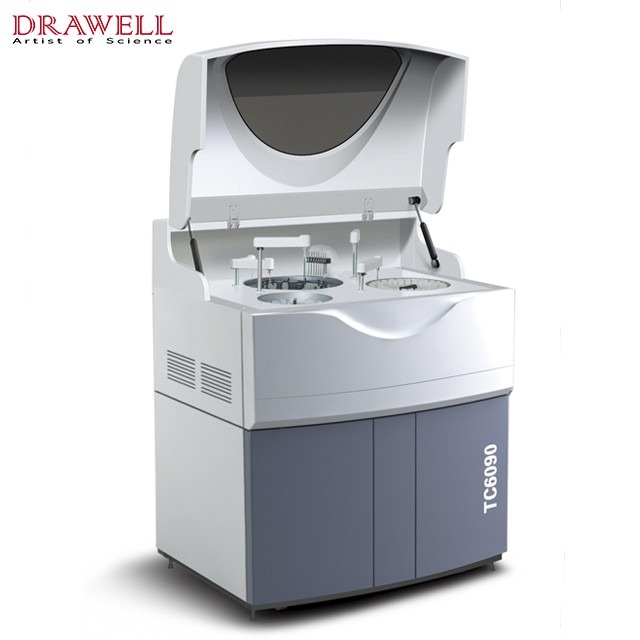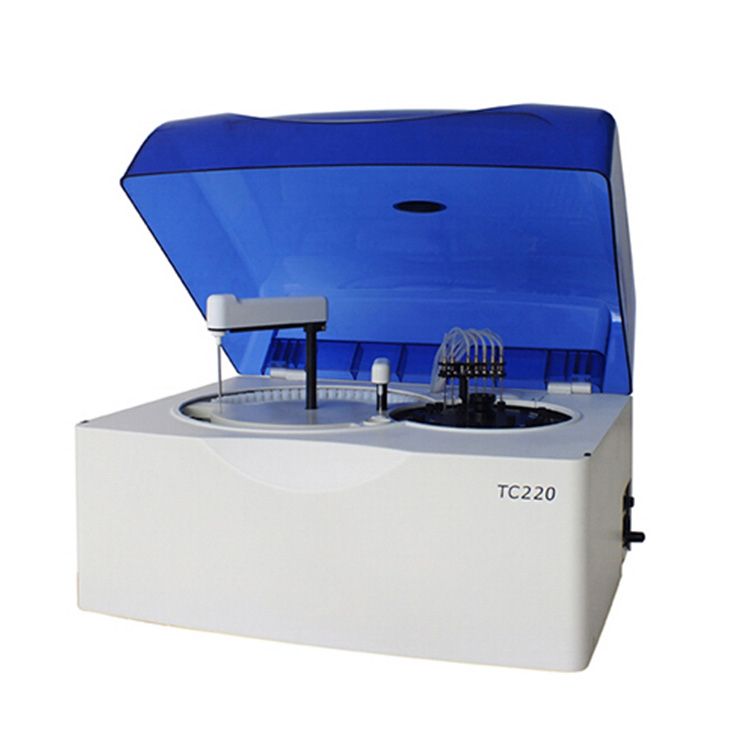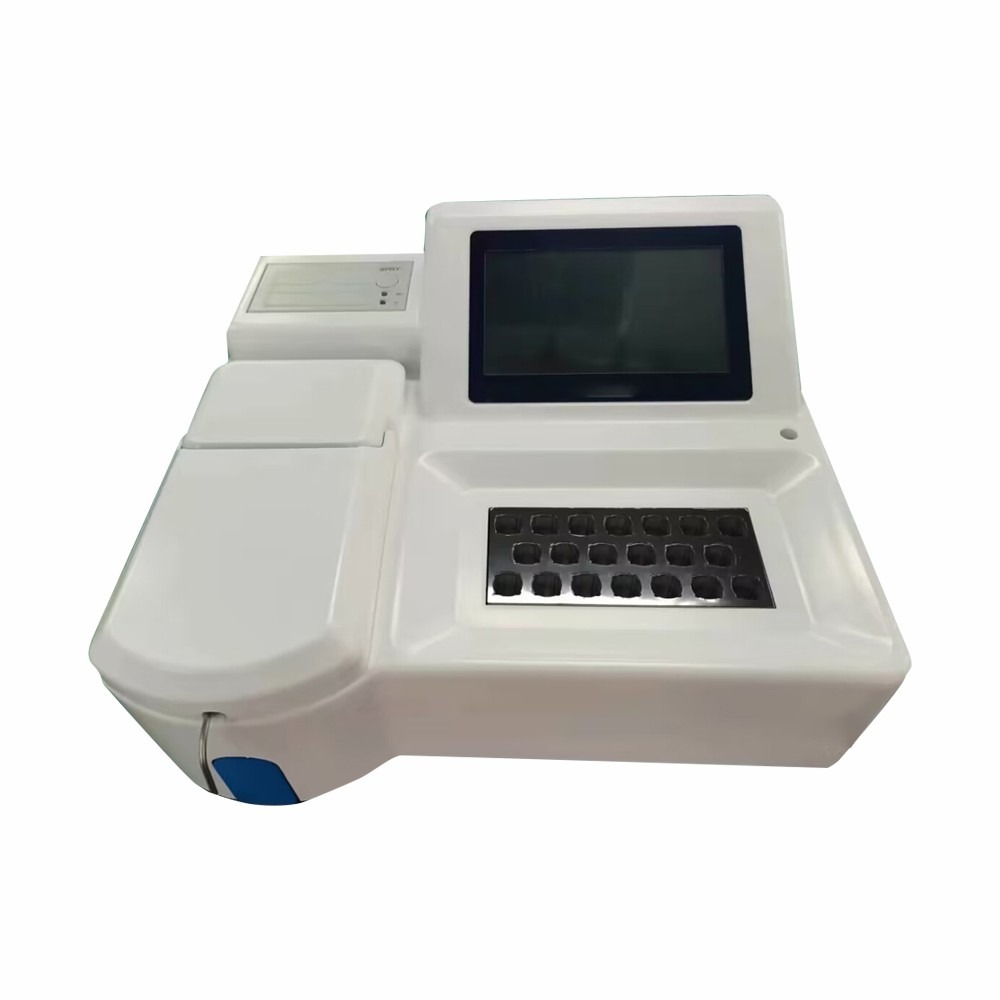A fully automatic biochemistry analyzer is a sophisticated instrument that has revolutionized the way blood and other physiological fluids are analyzed. The significance of the fully automatic biochemistry analyzer and how it has transformed clinical diagnostics will be discussed in this article.

The Significant Role of Fully Automatic Biochemistry Analyzers in Clinical Diagnostics
Understanding Biochemistry Analysis
Biochemistry analysis is an important part of clinical diagnostics since it gives significant information about a patient’s health by analyzing the composition of body fluids such as blood and urine. These tests can provide data on organ function, disease indicators, and overall health. Traditionally, biochemistry analysis was time-consuming and labor-intensive, requiring expert professionals to execute a variety of manual operations. This procedure was not only slow but also prone to human mistakes.

Key Advantages of Fully Automatic Biochemistry Analyzers in Revolutionizing Clinical Diagnostics
- Speed and Efficiency
The speed of analysis is one of the most significant advantages. These biochemistry analyzers can process multiple samples simultaneously and deliver results quickly, reducing patient waiting times and enabling prompt clinical decisions. This is especially crucial in emergency situations.
- High Throughput
Fully automatic biochemistry analyzers can process a large number of samples in a short amount of time, making them ideal for clinical laboratories with a heavy workload. This high throughput capability enables greater productivity and shorter turnaround times.
- Precision and Accuracy
The potential for human mistakes in manual testing procedures is reduced by automation. These analyzers are programmed to execute tests with high precision and repeatability, ensuring consistent and dependable findings.
- Comprehensive Testing
The potential for human mistakes in manual testing procedures is reduced by automation. These analyzers are programmed to execute tests with high precision and repeatability, ensuring consistent and dependable findings.
- Small Sample Size
Fully automatic biochemistry analyzers require modest sample quantities, preserving important patient samples and making them appropriate for pediatric or geriatric patients with restricted sample availability.
- Consistency and Reproducibility
These analyzers use the same testing methods every time, guaranteeing that each sample is tested under the same conditions, which is critical for reproducible results and data quality.
- Reduced Labor Requirements
Automation reduces the need for human sample preparation and testing, which can result in significant labor and staff cost reductions.
- Data Management
Modern automatic biochemistry analyzers have sophisticated software for data handling and integration. They can efficiently store, organize, and retrieve data, allowing healthcare workers to track patient results and access past data. This capacity aids in the monitoring of chronic illnesses and streamlines the diagnostic process.
- User-Friendly Interfaces
Many fully automatic biochemistry analyzers are designed with user-friendly interfaces that simplify the operation of the instrument. This feature enables a wider range of healthcare professionals to use the equipment effectively, reducing the need for specialized training.
- Cost-Effectiveness
While the initial investment in a fully automatic biochemistry analyzer can be significant, the long-term cost-effectiveness is evident in the reduced labor and resource requirements, as well as the improved diagnostic efficiency and patient care.

Applications of Impacts of Fully Automatic Biochemistry Analyzers in Clinical Diagnostics
Fully automatic biochemistry analyzers are used in a wide range of healthcare settings, including hospitals, clinics, and research laboratories. They are critical in the diagnosis and monitoring of a wide range of medical illnesses, such as diabetes, renal disease, liver disorders, and cardiovascular disease. These analyzers have also proven useful in routine health examinations and preventative medicine.
Their contribution to clinical diagnosis cannot be emphasized. Fully automatic biochemistry analyzers have not only increased the efficiency of healthcare delivery by expediting the testing procedure, but they have also made reliable diagnostic information more accessible to patients. As a result, earlier therapies and improved disease management have become possible, ultimately improving patient outcomes.
Challenges and Future Developments of Fully Automatic Biochemistry Analyzers in Clinical Diagnostics
While fully automatic biochemistry analyzers have substantially improved diagnostic capabilities, issues like instrumentation and maintenance costs persist. Future advancements in the industry could include even more downsizing, integration with electronic health data, and broader testing capabilities. These advancements are anticipated to improve healthcare delivery and patient care in the future.
Conclusion
The advent of fully automatic biochemistry analyzers marks a significant leap in clinical diagnostics. These instruments are altering the way we diagnose and manage health disorders by providing speed, precision, and broad testing capabilities, ultimately leading to better patient care and improved health outcomes. As technology advances, the influence of these analyzers is projected to grow even more, making them a necessary tool in modern healthcare.



